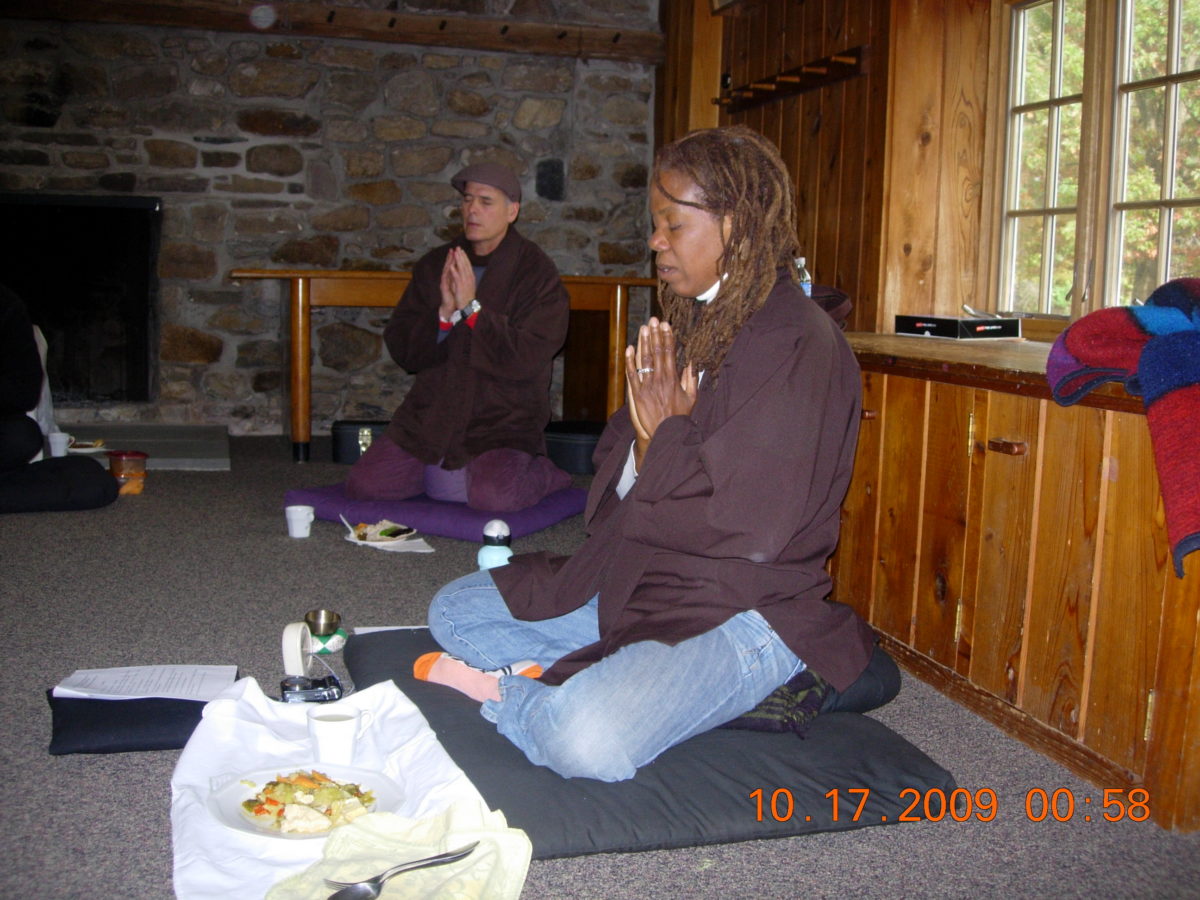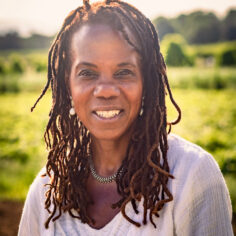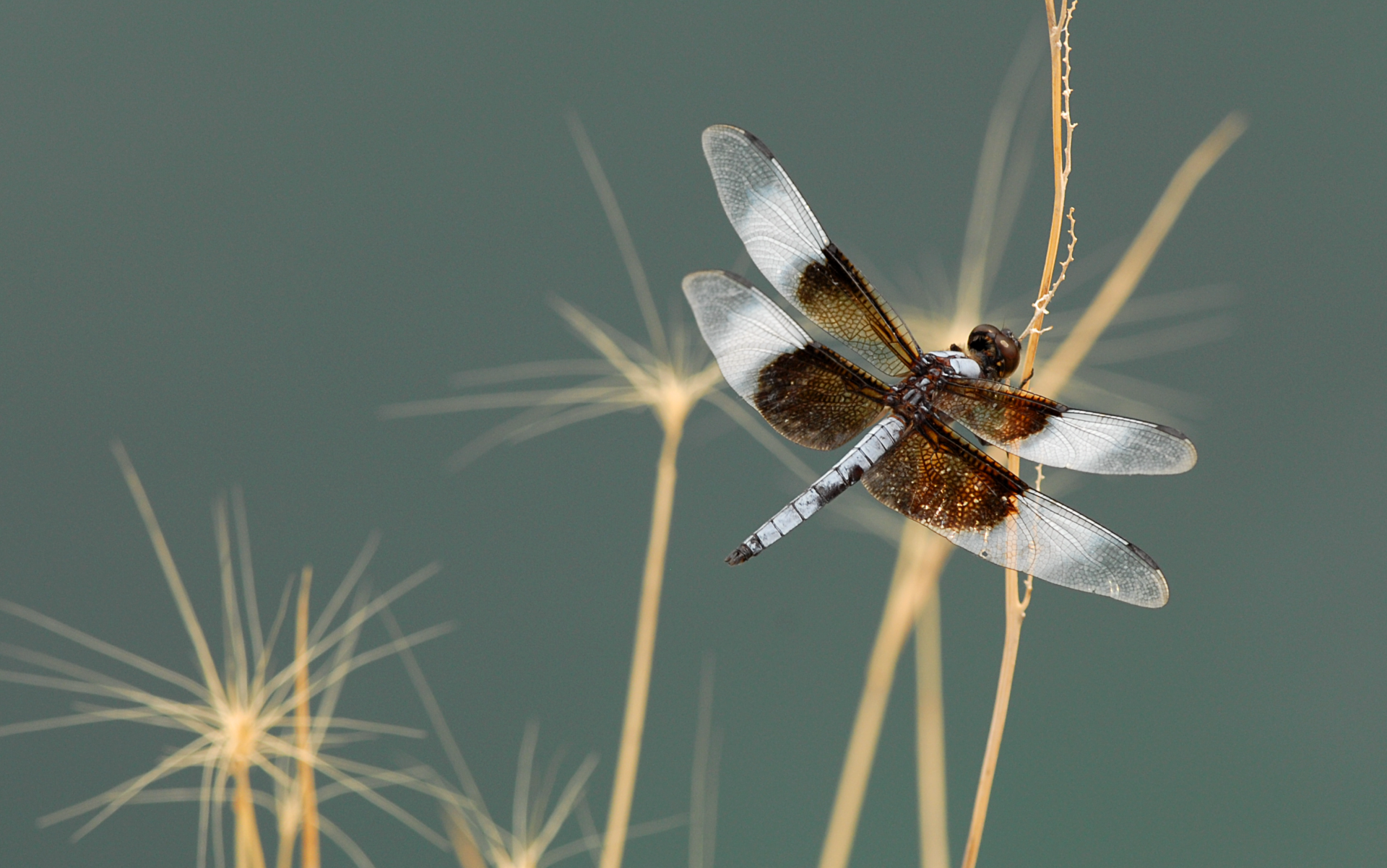Old Path Sangha Turns Ten!
By Valerie Brown in June 2011

“Building a Sangha is very healing for the world.”
– Thich Nhat Hanh
On a rainy, cloudy Saturday afternoon in October 2009, friends of Old Path Sangha (OPS) gathered for a Day of Mindfulness and to reflect on a milestone: the tenth anniversary of the founding of the Sangha in New Hope,
Old Path Sangha Turns Ten!
By Valerie Brown in June 2011

“Building a Sangha is very healing for the world.”
- Thich Nhat Hanh
On a rainy, cloudy Saturday afternoon in October 2009, friends of Old Path Sangha (OPS) gathered for a Day of Mindfulness and to reflect on a milestone: the tenth anniversary of the founding of the Sangha in New Hope, Pennsylvania. The theme of our anniversary celebration was “Healing the World, One Sangha at a Time.”
Old Path Sangha began as Old Path Zendo, which was founded by dedicated Order of Interbeing (OI) members Judith and Philip Toy. The Toys followed the traditions of Thich Nhat Hanh and also had a strong and elegant sitting practice in the Rinzai tradition. I loved chanting the Heart Sutra in old-fashioned Japanese, a practice that has continued at OPS even to this day.
When the Toys decided to retire in North Carolina to be closer to their family, I vowed to keep weekly meditation practices going at the zendo. Without hesitation, I moved out of my home in a nearby town in western New Jersey and moved into the zendo, located in a 200-year-old stone farmhouse on sixty acres in Bucks County, Pennsylvania. The next year was spent hauling wood from the woodshed to the living room to keep a fire going when the Sangha came for sitting practice, clearing cobwebs, dusting, scrubbing floors, and preparing snacks—all to make whoever showed up feel at home. It was simultaneously exhausting and gratifying.
During that year, I received a deep and profound lesson about “protecting the Sangha.” I learned to look deeply at, and to overcome, my resistance to being committed to the Sangha. I realized that commitment—staying with the good and the bad and accepting the way things are—was one of my biggest issues. I felt torn by the competing obligations of home, work, family, school, and the Sangha. In learning to be there for the Sangha, I learned how to be there for myself and others. I learned the joy of giving, and I also learned the necessity of sometimes saying “no,” knowing that preserving my energy was an act of self-love. Initially, I found this hard to do; my needs for space and rest seemed at odds with the Sangha’s survival. I realized, though, that I could be a better Sangha member and a healing force in the Sangha by respecting my limits and not judging myself; that self-love, at times the hardest thing, is the practice of love.
After a year of juggling graduate school, family obligations, and a full-time job as a lawyer-lobbyist, I moved out of the old stone farmhouse and back into my home in western New Jersey.
Finding Home
Once I moved from the zendo, it was time for our group to transform. We took the name Old Path Sangha and began to look for a home. We found our new home in tiny St. Philip’s Episcopal Chapel, located next to a beaver pond and wetlands in the small artists’ community of New Hope. The chapel hosts an eclectic mix of groups, including the Beaver Pond Poets, AA, a Bible study group, and many others. Our relationship with St. Philip’s and the current vicar, Rev. Peter Pearson, is a living example of its motto, “Radical Welcome.” Once planted at St. Philip’s, our Sangha, a tiny seed of hope, slowly began to grow.
We come to the Sangha with our very busy schedules, family obligations, and full-time careers. Despite the ups and downs we have faced over the years—divorce, career changes, sickness, the deaths of parents and other family members, and the general stuff of life—we hold fast to the belief in the healing power of a community united by love. We recognize that we support the Sangha and that the Sangha supports us. We cherish the teachings, knowing that the fruit of the teachings is an open heart and mind.
We have relied on the practice of Beginning Anew to resolve small and large conflicts that threatened to tear the Sangha apart, promoting understanding, the root of love. We have studied the Five and the Fourteen Mindfulness Trainings to develop our understanding of and compassion toward ourselves and others. At each Sangha sitting, we share Thay’s inspirational words from his many books, and find this especially helpful when one or more of us faces life challenges. As a Sangha, we have attended five-day, weekend, and day-long retreats, building community and togetherness. We have shared many, many Sangha potluck gatherings to strengthen our bonds of friendship.
Although we remain small, we have nurtured connections with area Sanghas, hosting days of mindfulness throughout the Delaware Valley. We are part of an interfaith community in Bucks County and have participated in interfaith events with other religious organizations. Some of our members have realized their aspirations to serve the wider Sangha by becoming OI members. The work of building the Sangha garden, much like cultivating a vegetable and flower garden, has been slow and steady, attending to the very foundations of the Sangha: understanding and compassion.
Over and over, we have agreed to recommit ourselves to the Sangha, to come together to practice understanding, peace, and compassion, not just in our weekly sessions, but in our jobs, with our families, and with others. Over and over as a Sangha, we have recommitted ourselves to live our daily life in mindfulness. That tiny seed has grown into a healthy plant with deep roots and vibrant green leaves that has sustained Sangha members, visitors, the New Hope community, and area Sanghas. We have transmitted positive seeds of our practice to all we come in contact with, friends and strangers alike.
The Buddha of the Twenty-First Century
At our tenth anniversary celebration, Dharma Teacher David Dimmack remarked that a Sangha is “revolutionary.” OPS has indeed brought about a revolution in the way our Sangha members act, speak, and think.
OPS, like any family, has been through many changes. People have come and gone. There were times I thought our small, newly formed group would not survive. There were times when the Sangha felt too tiny to survive. I worried that my energy level and the energy of other members were not up to the task of sustaining a Sangha. I worried that the many competing obligations of family and work would overwhelm our desire to practice in community. Settling in the tiny artists’ village of New Hope, the Sangha seemed unlikely to find others interested in practice.
In coming to accept the smallness and fragility of the Sangha, I have come to understand those parts of myself that are similarly small and fragile. The effort of sustaining a small, fledgling community of practice has allowed me to look directly at my fears, my aspirations, and larger societal messages that say “bigger is better.” In tending OPS, a tiny Sangha in a tiny chapel in a tiny artists’ community, I have been nurtured in very big ways by the support of the Sangha.
Thay has said that the Buddha of the twenty-first century may manifest as Sangha. Our Sangha, a tiny yet dedicated core group of members, comes together to practice mindfulness as a community of love, peace, brotherhood, and sisterhood. Building a Sangha takes time. Ten years is just the beginning for Old Path Sangha. It is a lotus flower to our community and to the world.



